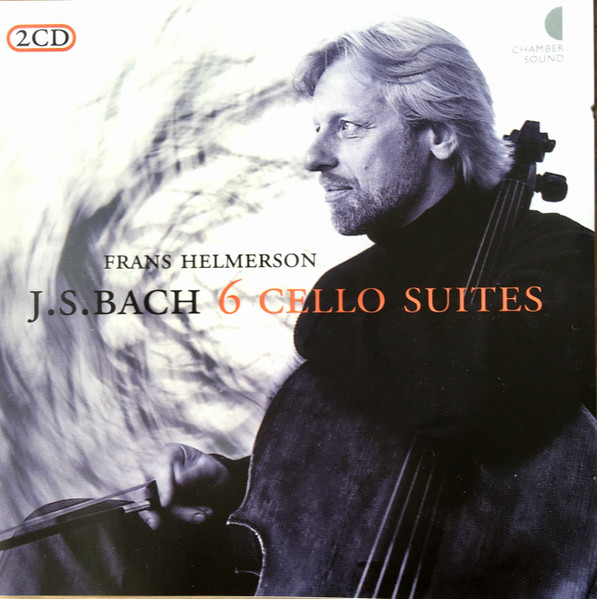
Frans Helmerson. Bach Cello Suites. Chamber Sound CSCD 00029/30 Released 2000. Available as download or stream. Auditioned on Tidal CD quality.
Recorded in Sweden 29-31 March and 18-21 Nov 1999.
Venue of recording unknown.
Cello played not identified but Helmerson known to own a Domenico Montagnana made in 1742
The Cellist
Helmerson was born in Sweden and is one of the country’s foremost cellists. He has taught Truls Mork and Benedict Kloeckner both of whom have recordings of the Suites reviewed on this site.
He was recommended to William Pleeth by non other than Jacqueline du Pre. There followed a fruitful period with this teacher which is commented on in a number of internet articles.
https://stringsmagazine.com/the-teacher/
Helmerson has previously recorded Suites 2,3 and 5 in 1984, but this 2000 release is his only release of the complete Suites. More of this recording in my conclusion.
The recording.
The sound quality is excellent as one would expect from a recording of this era. The cello impresses with width of tone and stage. There is significant reverberation suggestion a Church like venue but I could not verify this with any research. Fortunately, it enhances the sound rather than detracting.
The style of playing is very much in the mainstream for recordings around the turn of the millennium. There is more legato playing and extended phrasing than I have noted with contemporary recordings. The tone is very full although not forced supported by subtle vibrato.
Vibrato.
Vibrato is what separates the two recordings of the Suites by Helmerson. His 1984 recordings have very obvious vibrato similar to Gendron. The result is a rather pinched overwrought sound. The 2000 release is much more balanced and in the fifth Sarabande vibrato appears almost absent.
Helmerson is quoted as saying:
Vibrato should come from the ear not the hand.
Vibrato is like lipstick-too much is ugly-the right amount and colour is beautiful.
These make good sense and I am glad to find this player follows his own wisdom!
Other features of this recording are generally brisk speeds although Sarabandes are suitably measured and sedate. The general feel of the playing is bold and assertive. Brisker passages are very well articulated. A lot of the performance is very exciting and grabs the attention due to excellent rhythm, pulse and direction of travel, which together with dynamics one would term horizontal phrasing. This gives the listener a clear sense of where Helmerson is taking the music and where the key points are.
This I feel is particularly noticeable in the fifth and sixth Allemandes which are tricky to sustain interest due to length and complexity of the timings.
Some movements for example the fourth Courante struck me as bordering on aggressive. However Helmerson always conveys his control with exemplary technique keeping intonation issues and loss of composure to the minimum.
The second Prelude stands out for its much more subdued voicing at least at the beginning which complements its minor key. It builds slowly to the climax in bar 48, quietens and then builds towards the end. There is no doubt in my mind that this is a balanced performance with plenty of contrast and sensitivity to the composer’s likely intentions.
Conclusion.
Overall there is a lot to admire with this recording. With more dynamic playing and more subtle vibrato this is clearly the better of the artist’s two releases. Strangely, the earlier incomplete CD is more readily available than the later complete recording. I would not be tempted by it and urge you to seek out a version of this 2000 issue or at least trial the earlier one on streaming services.
Charles.